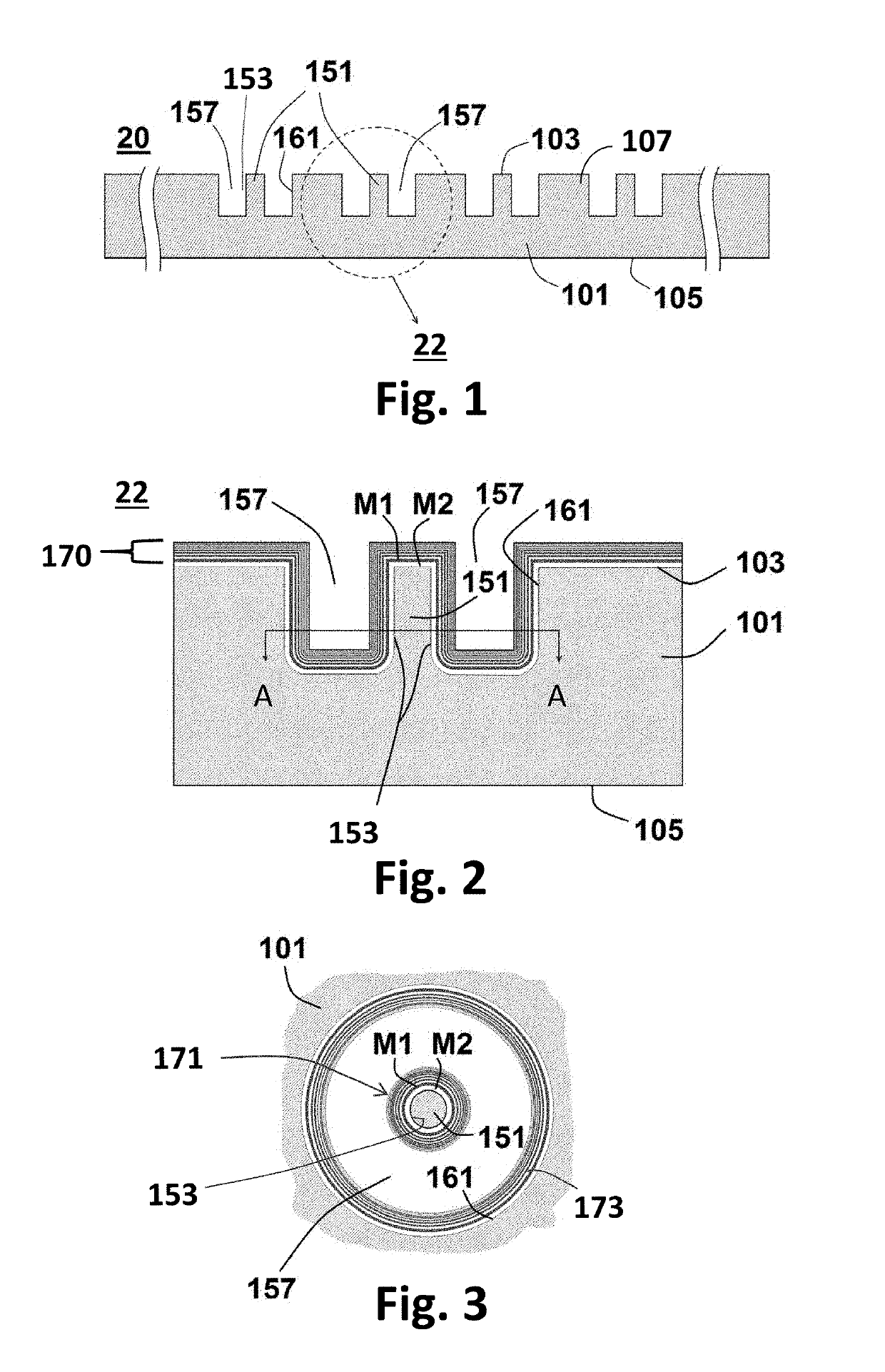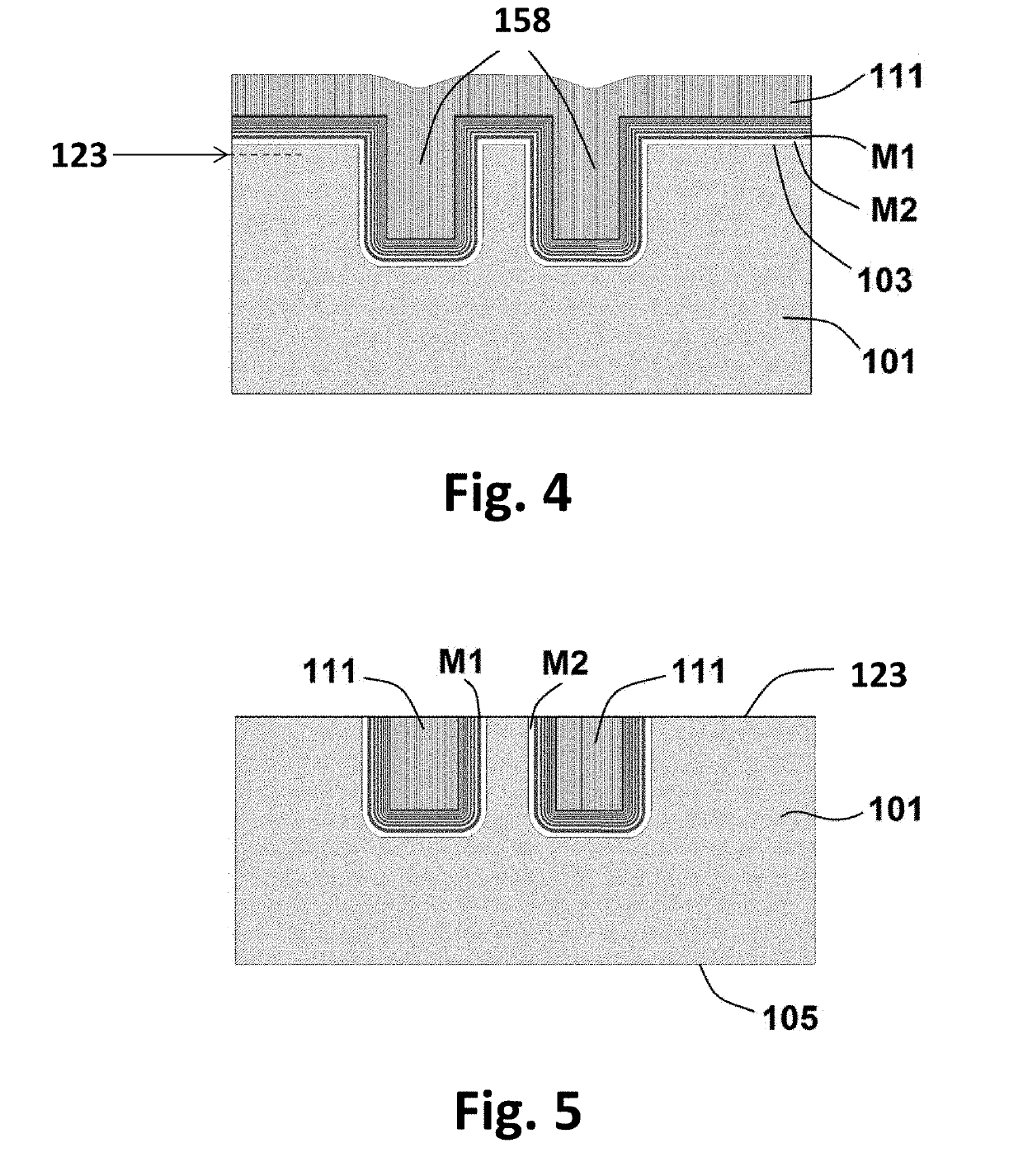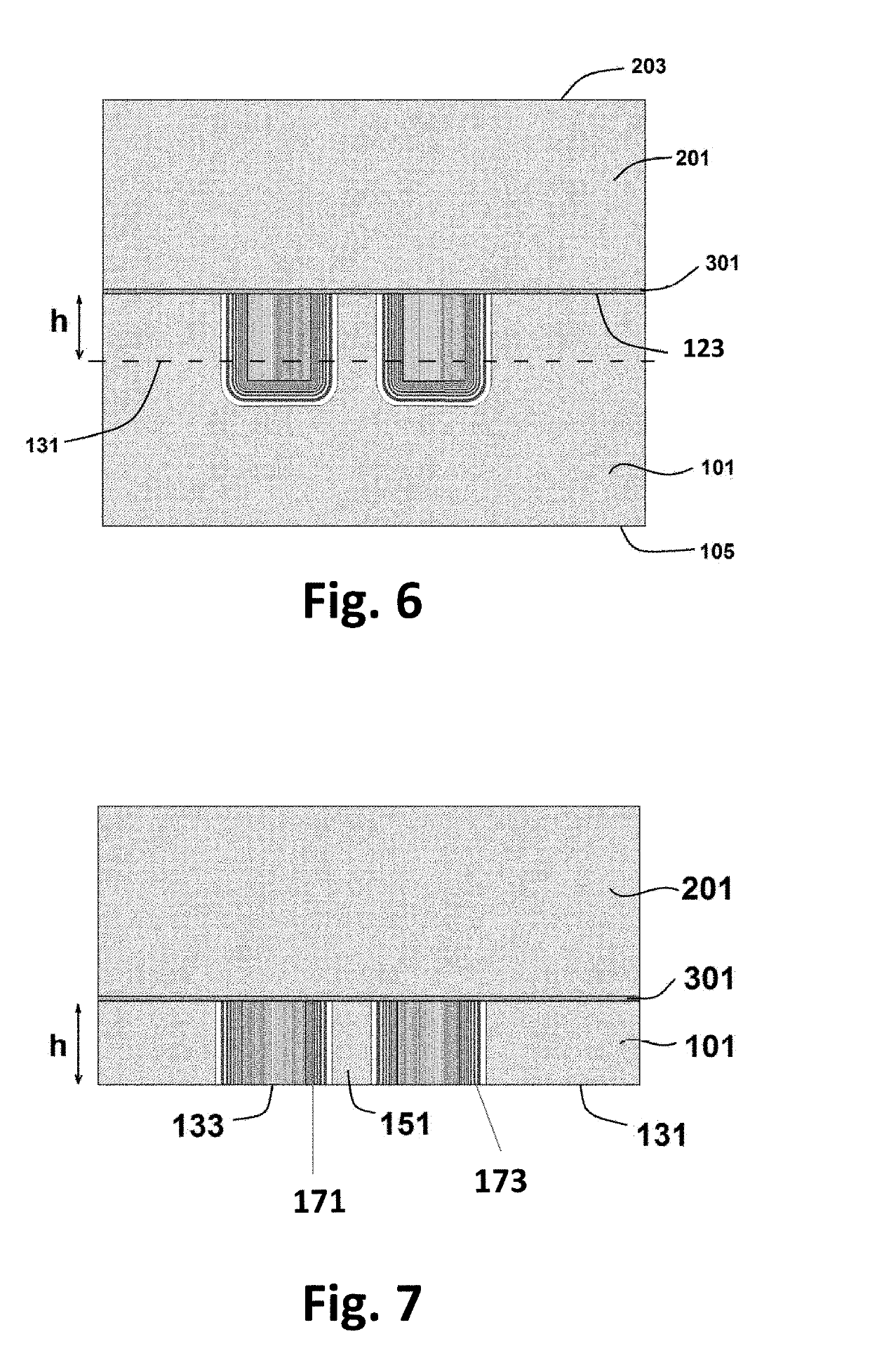Super-high aspect ratio diffractive optics fabricated by batch-processing
a batch processing and diffractive optic technology, applied in the field of diffractive optics, can solve the problems of insufficient x-ray or particle beam focusing efficiency, the modest aspect ratio of the features that all these types of lithography and methods can produce, and the inability to fabricate self-standing geometric objects of this aspect ratio without collapse or distortion, etc., to achieve fine tuning of optical properties, improve efficiency, and improve mechanical, thermal and electrical properties of devices
- Summary
- Abstract
- Description
- Claims
- Application Information
AI Technical Summary
Benefits of technology
Problems solved by technology
Method used
Image
Examples
first embodiment
[0081]FIGS. 1 to 10 illustrate schematically steps in a batch processing method of fabricating a device structure comprising a high aspect ratio diffractive optic comprising a Fresnel Zone Plate (FZP).
[0082]FIG. 1 shows a schematic cross-sectional view part of a precursor structure 20 comprising an array of cylindrical columns 151 defined in a planar substrate 101. Each column 151 is formed within a surrounding, concentric, cylindrical recess 157, with the sidewall 161 of the recess spaced from the sidewall 153 of the column. The planar substrate comprises, for example a silicon wafer having a smooth polished planar front surface 103 and back surface 105. FIG. 2 shows an enlarged view of part 22 of FIG. 1, comprising one of the array of cylindrical columns 151 within its recess 157, after deposition of a nanolaminate 170 comprising a sequence of conformal layers, comprising a first material M1 and a second material M2. As illustrated schematically, the nanolaminate 170 comprises a ...
fourth embodiment
[0135]Thus, FIG. 16A shows a schematic cross-sectional view of a multiple-phase diffractive optics device of a fourth embodiment, comprising a FZP for hard X-rays, using multiple layers (N) stacks of materials M1, M2, . . . MN. FIG. 16B illustrates the resulting N-steps phase shift approximation corresponding to an ideal continuous-varying phase shift in a kinoform as shown in FIG. 17C. Thus, it will be appreciated that the method can be readily generalized for multilayer stacks of ALD films, M1, M2, . . . MN, to approach a smooth variation of absorbance of phase shifting across Fresnel zones, for an increase in efficiency and elimination of unwanted focusing / diffraction orders.
[0136]In the device structures of the embodiments described in detail above with reference to FIGS. 1 to 17, the diffractive optics comprise diffractive line patterns in the form of concentric circular zones, formed around a cylindrical column or pillar. By providing a precursor structure or form comprising a...
second embodiment
[0147]For example, a certain tilt angle or other structuring of the side walls of structures used to deposit the sequential ALD layers is possible, allowable, and potentially advantageous to the functioning of the diffractive optical devices so fabricated, as long as the slant angle and other geometrical parameters of the resultant device are well controlled. For example, a tilt angle or slope of the sidewalls of the columns for the device structure of second embodiment, could lead to an enhancement of the focusing efficiency in a certain focus spot corresponding to a focus order towards which the tilted zone is pointing / blazing. Variations of the tilt angle close to this blazing direction can provide “guiding” of the hard X-rays or particle beams by channeling them in those directions, as long as the reflections on the adjacent zone walls are close to the total reflection condition. Recently, an analogous effect of guiding of X-rays through curved (similar to tilted) micro-channels...
PUM
| Property | Measurement | Unit |
|---|---|---|
| thickness | aaaaa | aaaaa |
| thickness | aaaaa | aaaaa |
| energy | aaaaa | aaaaa |
Abstract
Description
Claims
Application Information
 Login to View More
Login to View More - R&D
- Intellectual Property
- Life Sciences
- Materials
- Tech Scout
- Unparalleled Data Quality
- Higher Quality Content
- 60% Fewer Hallucinations
Browse by: Latest US Patents, China's latest patents, Technical Efficacy Thesaurus, Application Domain, Technology Topic, Popular Technical Reports.
© 2025 PatSnap. All rights reserved.Legal|Privacy policy|Modern Slavery Act Transparency Statement|Sitemap|About US| Contact US: help@patsnap.com



